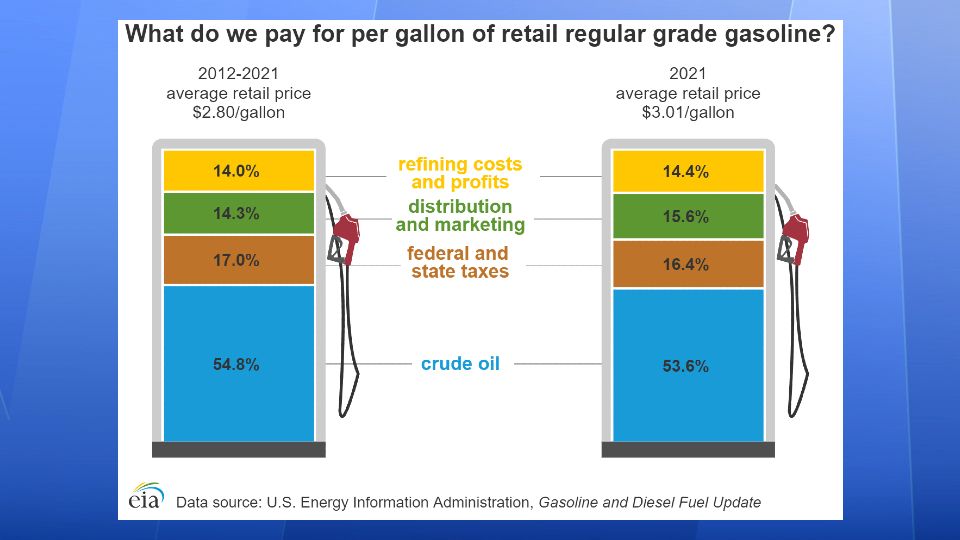BUFFALO, N.Y. — Every Monday, Spectrum News 1 shares AAA’s gas price update. It’s a snapshot of what you can expect at the pump. Many times, it’s not what you’re actually seeing at the station you use.
So where do these numbers come from and why do they vary so much?
Filling up the gas tank can leave you with a sinking feeling and a hole in your pocket. Supply chain issues, the war in Ukraine, hurricanes, you name it, it's a roll of the dice when it comes to seeing just how high the final price goes. This is where AAA comes in, giving us a snapshot weekly of what we can expect at the pump.
“We know gas prices are of interest to drivers, and they are constantly going up and down,” Elizabeth Carey, director of public relations and corporate communications of AAA Western and Central New York said. “This year they were going up for so long, we just wanted to provide that information.”
Those average prices though, tend to cause a bit of confusion and frustration as to why you’re not seeing that number at the pump.
So, how does AAA get those averages?
“We actually use a service called OPIS,” Carey explained. “They provide all the data to us.”
OPIS takes a look at roughly 5 million retail gas and diesel prices daily. It also looks at fleet card companies, oil prices, and crowdsourcing data from mobile apps.
How are gas station prices set?
“The way that stations price gas is what is the replacement cost,” said Jeff Lenard, who is a spokesman for the National Association of Convenience Stores. “What will their next tank, their next shipment cost.”
Another reason: Is the fuel branded or unbranded?
“When you sell branded gas, you have more limitations based on where you can get that gas, meanwhile if you are unbranded, you can shop around," Lenard said.
Then they can find better prices. Drivers play a role in prices, too. Lenard says it’s no secret we tend to drive farther to save money.
“They’ll even do that more than take a left-hand turn across a busy intersection,” Lenard said.
The size of the convenience store plays a role as well.
“Most station owners don’t make most of their money from selling fuel, they make it from inside their store,” Lenard explained.
Lenard says while station owners set the final 30 cents per gallon, after costs like credit card fees, etc. they profit roughly 10 cents a gallon.
The prices stations set come from a variety of sources.
Here’s a breakdown courtesy of the U.S. Energy Information Administration. Crude oil makes up most of the cost, and these seven factors play a role.
- Supply: OPEC and Non-OPEC
- Balance
- Spot Prices
- Financial Markets
- Demand: OPEC and Non-OPEC

Then there are federal and state taxes, which for New York total 35 cents per AAA. But remember, there’s a 16-cent suspension on the state tax that runs through December 31. As prices rose, counties also implemented their own sales tax caps. Erie and Monroe counties capped sales tax to only the first $2 of each gallon. Niagara County is $3.
Then there’s the cost of distribution and marketing, as well as refining costs and profits. A key factor in that this time of the year, per Carey, is refining. Gas is cheaper to produce in the winter.
“Winter blend versus summer blend, the difference is how it evaporates at different temperatures,” Carey said. “You need to put more into the summer blend because of the high temperatures.”
So there could be more relief ahead.
If you feel like you're being unfairly charged, you can report it to the state attorney general's office or your county. They will investigate to ensure gas stations are passing along any savings.









